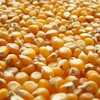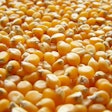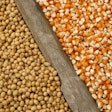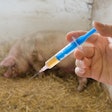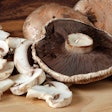Economic and political uncertainty led to flat growth among the Brazilian livestock production chain in 2013, and therefore the production of complete feed and supplements, according to Dr. Ariovaldo Zani, CEO of Brazilian Feed Industry Association Sindirações.
“The growth estimated for Brazil … has reflected the pressure of local ordinary infrastructure bottlenecks and inefficient diplomacy devoted to international trade, only focused in the apathetic multilateralism and distracted to the benefits of the bilateral agreements,” Dr. Zani said.
An estimated 46.5 million metric tons of feed were produced January through September 2013, flat from the same period a year earlier.
Broiler feed
The high cost of corn and soybeans in the second half of 2012 ate away at poultry producers’ capital and led to a decline in the breeders’ yield and fertile eggs. In the first three quarters of 2013, the demand of poultry feed fell by 1.3 percent and consumed 22.1 million metric tons, mainly because of the scarce supply of chicks for housing.
Layer feed
The production of layer feed grew 5 percent to 4.2 million metric tons through September, in response to vigorous housing layer chicks. However, this oversupply of eggs pressured their wholesale price enough to drive a reduction in the farms’ activity and decrease feeding appetite in the last quarter of 2013.
Beef cattle feed
The demand for beef cattle feed reached 2.1 million tons through September 2013, a drop of 4.2 percent from the same period in 2012. The number of steers and calves has dropped, resulting in lower feed consumption.
Dairy cattle feed
Up to September 2013, almost 3.9 million metric tons of dairy cattle feed were produced, an increase of 2.5 percent, mainly due to lower corn and soybean prices. This recovery drove investment in technical nutrition, but the increase in productivity wasn’t enough to meet demand of dairy products. As a result, milk prices reached the highest ever recorded.
Swine feed
The crisis resulting from the cost of corn and soybean meal greatly distressed all the production chains of animal protein during 2012. The forced liquidation of breeders, resulting in scarce supply of piglets which, along with the retraction of shipments overseas, contributed to the cooling demand for feed, whose production fell more than 0.5 percent to 10.9 million metric tons from January through September.
Pet food
The production of pet food grew 5.1 percent, exceeding 1.9 million metric tons, mainly driven by the emerging middle class that already represents more than half of the Brazilian population. The growing concern for pets’ wellness has increased demand for pet food.
Shrimp and fish feed
The demand for fish feed and shrimp grew 11 percent and reached almost 550,000 metric tons. The Official Harvest Plan stimulus has encouraged aquaculture production.

